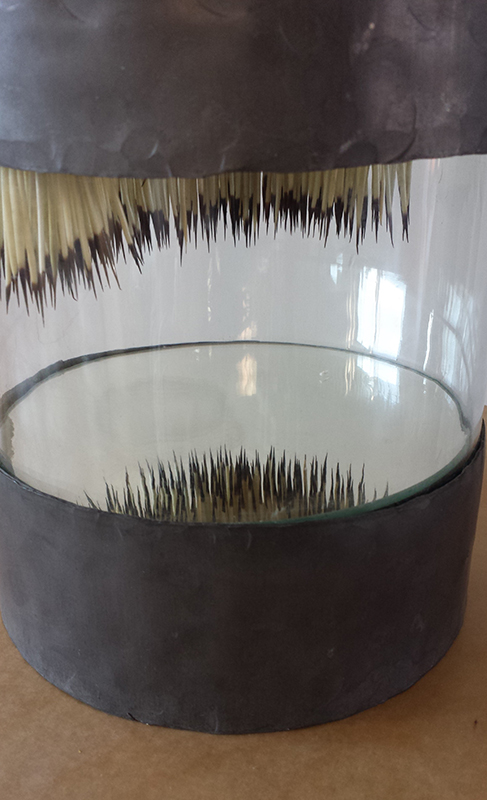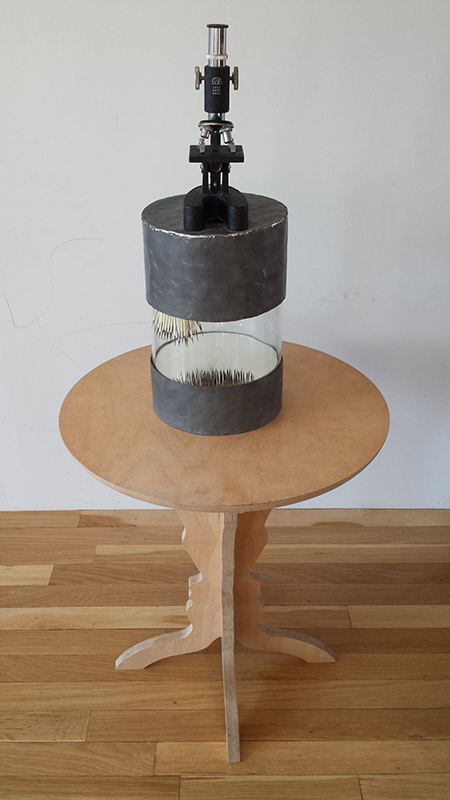


WYSIWYG (What You See Is What You Get), an interactive installation which responds to the viewers’ movements, foregrounds this concept of quantum entanglement and suggests to the viewer that the claims made for Science’s complete objectivity be regarded with skepticism. The piece itself consists of a large glass vial wrapped top and bottom in sheet lead. Visible in between and reflected in a round mirror that fills the “bottom” of the vial (hiding a compartment underneath) is a large collection of sewing needles sheathed in porcupine quills and suspended such that they hang individually from the holes in a perforated aluminum disk. Sitting on top of the lead-clad vial is a microscope through which the observer is invited to look. But as one puts one’s eye to the scope, bending one’s head to do so, one breaks a beam of light coming from above which activates a micro-computer and motor hidden within the vial. The perforated disk with attached quills rapidly rotates 360 degrees around the vial before returning slowly in the opposite direction to its starting position. Two things happen from the viewers’ perspective as this process is taking place: the observer looking through the microscope sees a Moiré pattern as the turning disk (through which s/he is looking) overlaps with its mirror-image below; and viewers not looking through the microscope but observing, instead, the observer, see the quills mysteriously dragged out of their perpendicular state as the disk turns due to the force of an electro-magnet hidden underneath the mirror in the bottom of the vial. Neither observer is able to see what the other is seeing, though both can claim to have observed the same piece. The piece also draws attention to the fact that the scientific instrument (microscope) which purports to reveal the truth is only part of a much larger apparatus which includes the overhead light, the photosensitive resistor which triggers the motor and the viewer him/herself. This leads the viewer to suspect that s/he does not occupy a privileged position outside the system but is always already folded into it.